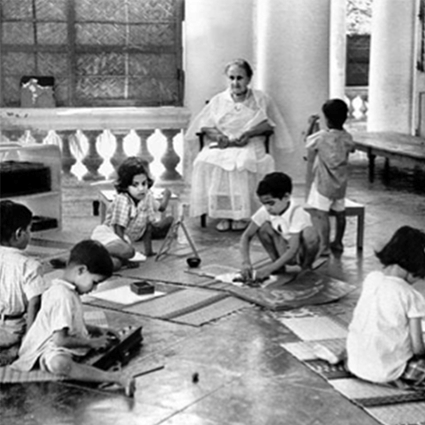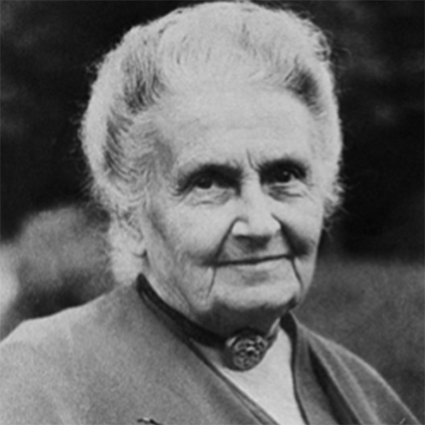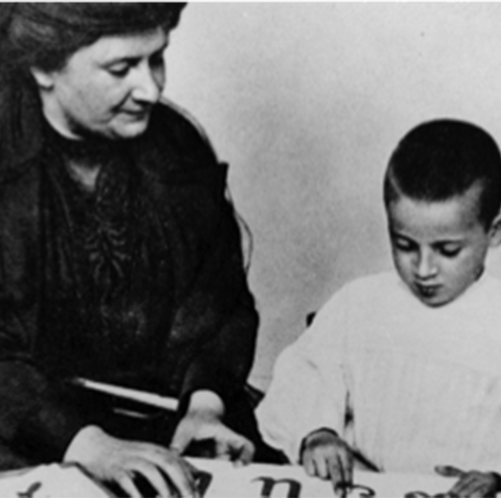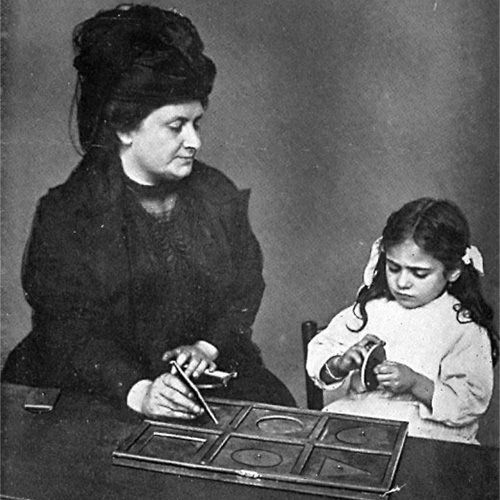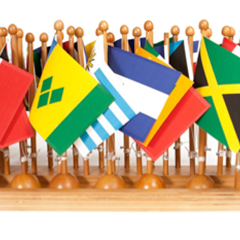Who Was Dr. Montessori?
“Within the child lies the fate of the future”— Dr. Maria Montessori
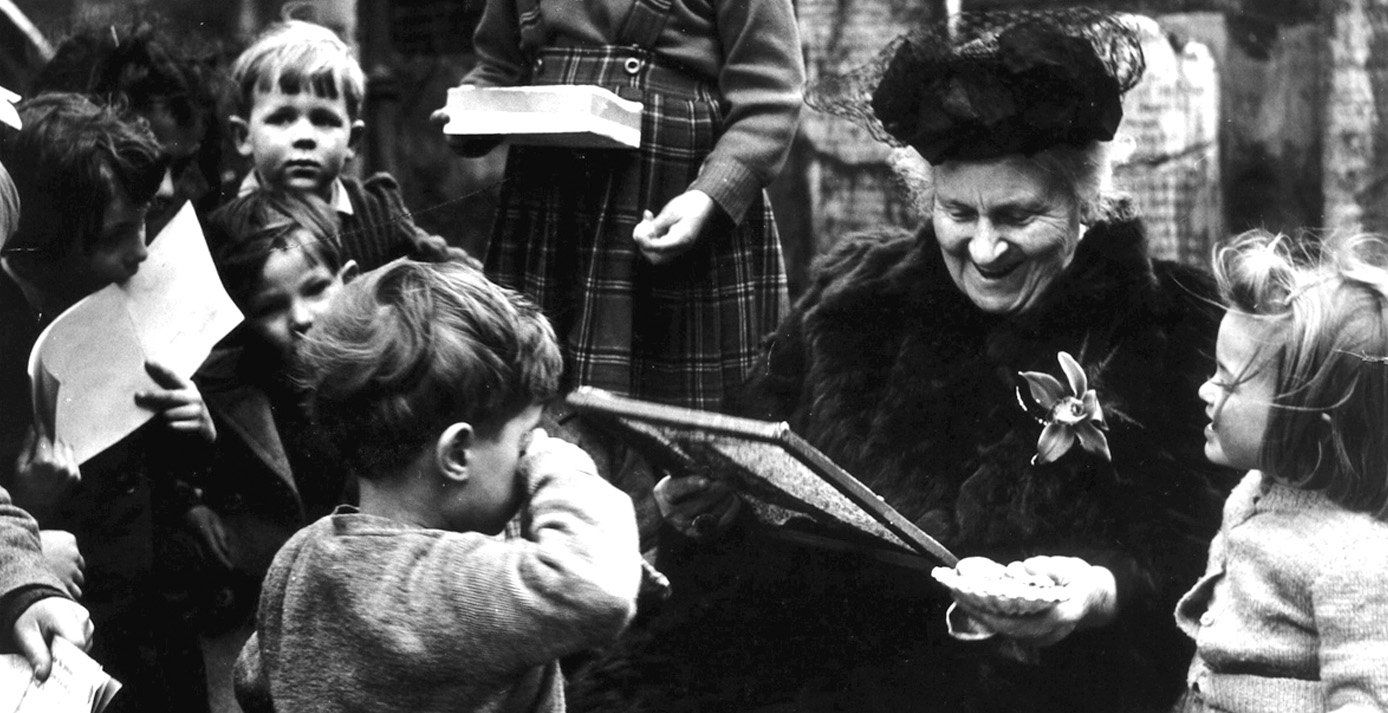
History of Dr. Montessori
Dr. Maria Montessori was the first woman to practice medicine in Italy. A scholar of biology, psychiatry, anthropology, and medicine, she graduated from the Faculty of Medicine at the University of Rome in 1896. As a physician, Dr. Montessori was in touch with young children and became profoundly interested in their development. Through careful and exhaustive scrutiny, she realized that children construct their own personalities as they interact with their environment. She also observed the way they learned as they spontaneously chose and worked independently with the materials she provided.
She studied children of all races and cultures in many countries around the world, soon seeing the universality of the laws of human development. She continued her observations throughout her life, widening and deepening her understanding until her death in 1952. Also a devoted humanitarian, she was three-times nominated for the Nobel Peace Prize for her advocacy efforts toward a more peaceful humanity.
Maria Montessori was a scientist, and as a good scientist, she was earth-bound and highly spiritual in her pursuit of truth. Through her studies of educational methods, she declared two principles as the foundation of Montessori pedagogy: the universal characteristics of the human child, and the child as a unique, unrepeatable, respectable, and admirable individual to be unconditionally accepted as one of life’s most marvelous expressions.
Historical Timeline
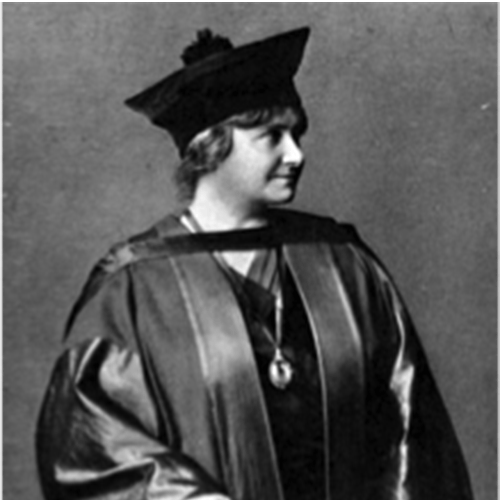
1896
Maria graduates to great public acclaim from the University of Rome School of Medicine. She is the first woman in Italy to receive a medical degree. Maria also studied anthropology, biology and psychiatry. As an early feminist she represents Italy at the 1896 Women’s Conference in Berlin where, among other things, she is a strong advocate for equal pay.
1896-1907
Dr. Maria Montessori’s work brings her into close contact with children. During this period, the Italian Minister of Education appoints her as the Director of the Scuola Ortofrenica. This institution was dedicated to the care and education of youngsters that were considered “cognitively challenged”. Through the development of her Montessori method, many of these 8-year-old students are able to pass standard testing with above-average scores.
1907
Dr. Maria Montessori opens Casa dei Bambini or “Children’s House,” for children ages 3 to 6 years in one of the poorest neighborhoods in San Lorenzo, Italy.
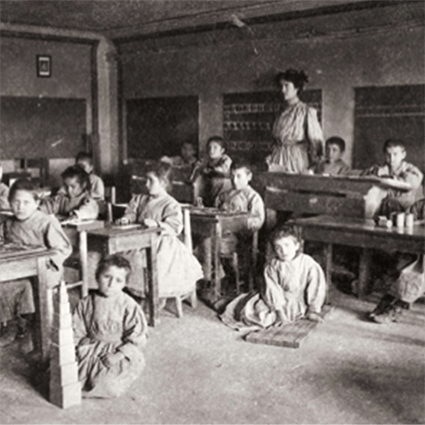
1907-1910
Word of Dr. Montessori’s successes spread to public figures, educators, and journalists. By 1910, schools using her methods had opened throughout Europe, and were being opened around the world.
1911
The first Montessori school in the US opened in Tarrytown, New York.
1911-1939
Dr. Montessori dedicated this time in her life to advancing her child-centered approach to education. She lectured widely, wrote articles and books, and developed a program to prepare teachers in the Montessori Method. Through her efforts and the work of her followers, Montessori education was adopted worldwide. She also wrote, spoke frequently, and campaigned for women’s rights and the need for greater opportunities for women. She was recognized as a leading feminist voice on the need for greater opportunities for women.
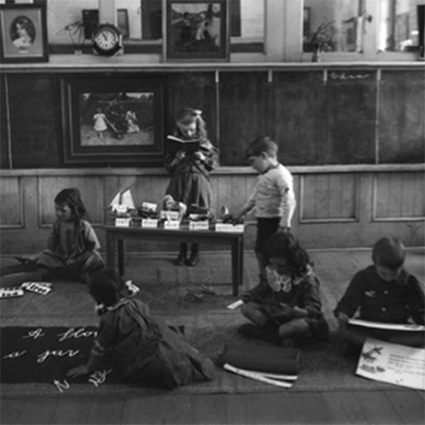
1940-1945
Dr. Montessori travels to India, and because of hostilities between England and Italy, is forced to live in exile for the remainder of the war. During this time, she trains teachers in her method. Having lived through such turbulent times, Dr. Montessori also added peace education to her curriculum.
1946-1952
Returning to Europe after the war ended, Maria spent the rest of her days in Amsterdam. She died peacefully on May 6, 1952.
Present Day
The North American Montessori Teachers’ Association estimates that there are about 4,500 Montessori schools in the United States and 20,000 worldwide.




